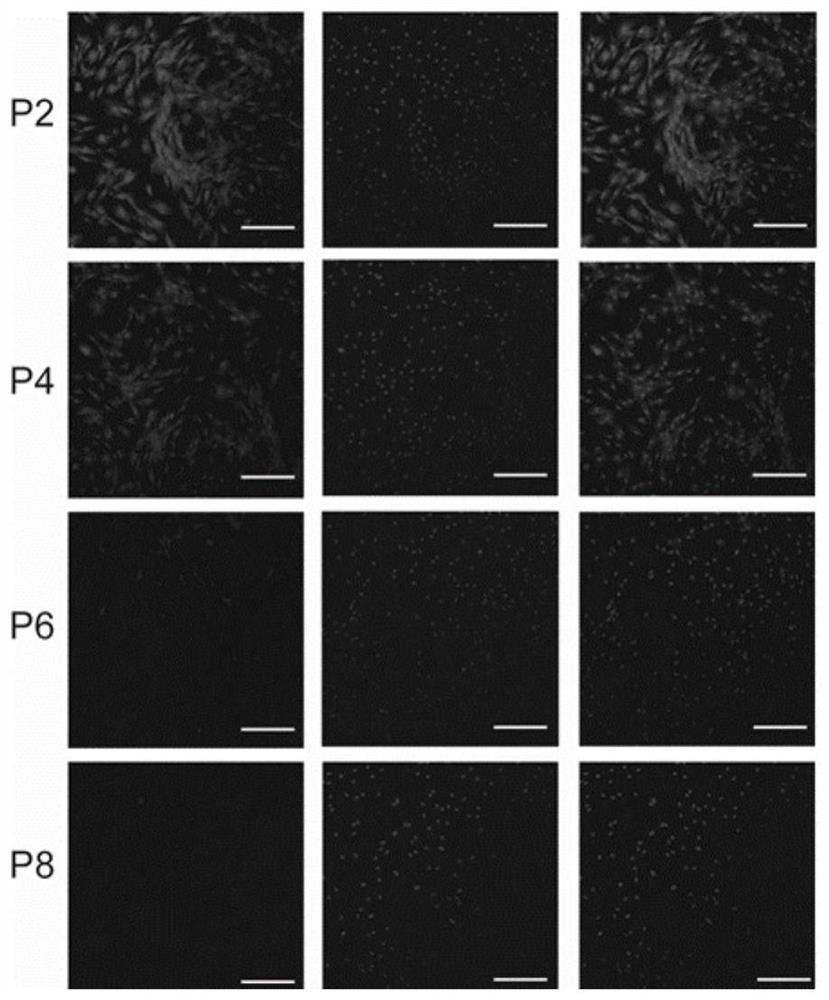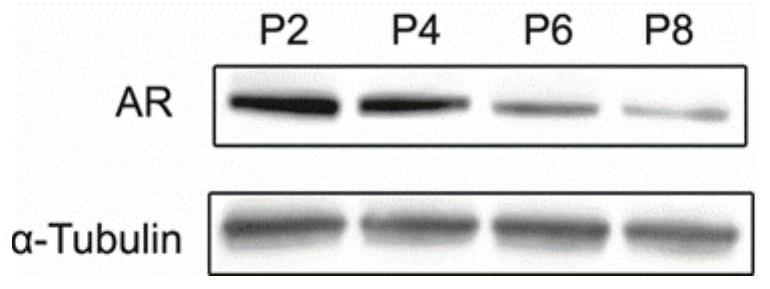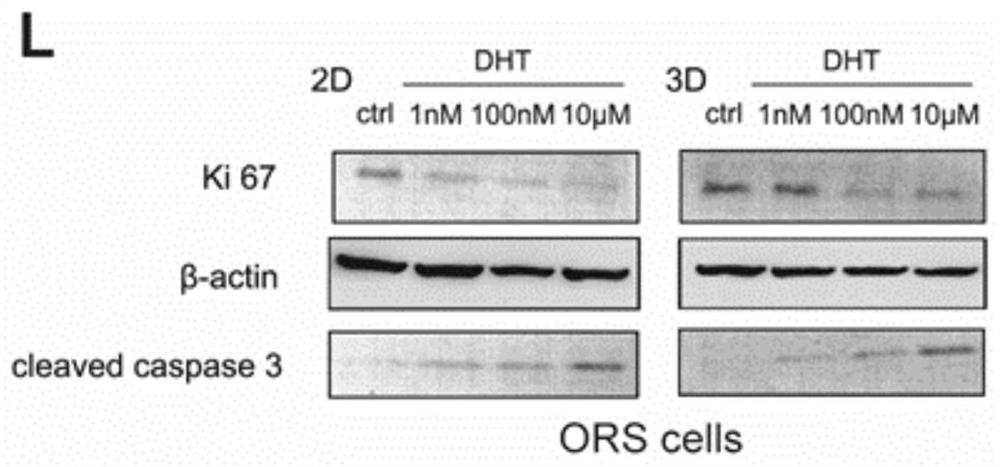Method for constructing androgenetic alopecia cell model
A technology of androgenetic and cell models, applied in the biological field, can solve the problem of not being able to truly simulate the shape of the dermal papilla, the lack of communication between cells and extracellular matrix, cell proliferation, migration, differentiation and in vivo differences in 2D androgenetic alopecia models Large and other problems, to achieve the effect of reducing modeling risk, shortening modeling time, and high reference value
- Summary
- Abstract
- Description
- Claims
- Application Information
AI Technical Summary
Problems solved by technology
Method used
Image
Examples
Embodiment 1
[0051] Step 1, obtaining dermal papilla bulbs, inoculating, culturing and subculture.
[0052] 1. Human hair follicles were taken from the bald (frontal) area of a male patient undergoing hair transplantation;
[0053] 2. Put the hair follicles in DPBS and wash them three times, use microsurgical scissors to cut off the hair bulbs of the hair follicles under the body microscope, rinse the hair bulbs three times with DPBS, after exhausting the DPBS, add 3ml of 2mg / ml Collagenase digestion for 30 minutes, pipetting once every 10 minutes to obtain dermal papilla ball suspension;
[0054] 3. Centrifuge the dermal papilla ball suspension at 1000rpm for 5min, discard the supernatant, and resuspend with 1% (v / v) penicillin-streptomycin and DMEM medium containing 20% (v / v) fetal bovine serum , inoculate the dermal papilla balls in a cell culture flask, add 1% (v / v) penicillin-streptomycin and DMEM medium containing 20% (v / v) fetal calf serum, place at 37°C and 5% CO 2 culture...
Embodiment 2
[0069] The steps of this embodiment are the same as those of the above-mentioned embodiment 1, except that the concentration of dihydrotestosterone is 100 μM.
Embodiment 3
[0071] The steps of this embodiment are the same as those of the above-mentioned embodiment 1, except that the concentration of dihydrotestosterone is 1 μM.
PUM
| Property | Measurement | Unit |
|---|---|---|
| concentration | aaaaa | aaaaa |
| diameter | aaaaa | aaaaa |
Abstract
Description
Claims
Application Information
 Login to View More
Login to View More - R&D
- Intellectual Property
- Life Sciences
- Materials
- Tech Scout
- Unparalleled Data Quality
- Higher Quality Content
- 60% Fewer Hallucinations
Browse by: Latest US Patents, China's latest patents, Technical Efficacy Thesaurus, Application Domain, Technology Topic, Popular Technical Reports.
© 2025 PatSnap. All rights reserved.Legal|Privacy policy|Modern Slavery Act Transparency Statement|Sitemap|About US| Contact US: help@patsnap.com



